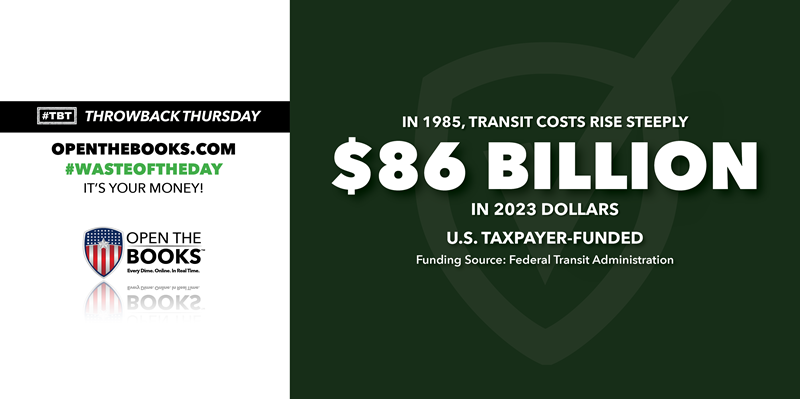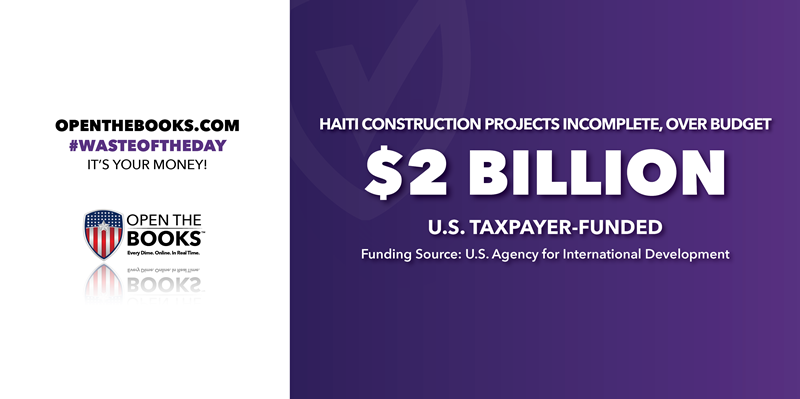
NYC Spending $5.3M to Install Toilets
March 27, 2023

New York City is planning to spend $5.3 million to install high-tech toilets in public parks in each of the five boroughs. Those five toilets, however, cost less than $1 million to purchase, according to The New York Post.
Each toilet from Portland Loo only cost about $185,000, putting the total price tag at $925,000. The other $4 million in costs comes from high infrastructure costs and navigating the complex and bureaucratic installation process.
An NYC Parks Department representative told The New York Post that part of the reason for the steep costs is because the program intentionally chose locations without existing bathrooms, so new electric and water infrastructure needs to be created in these areas. Other installation costs include preparation work, laying a foundation, and erecting fencing.
New York City is notorious for its stringent and complex zoning and construction laws, which undoubtedly add to the total cost. A sales manager for the portable bathroom manufacturer that is leading this project told news outlet The City, “I built 180 of these, from Portland to Alaska to Miami, and I’ve never had this certification problem,” and added “New York City has been the most difficult to have a permit approved for.”
Despite still being in its early stages, the project seems doomed for delays and mismanagement. Already, an NYC official angrily contacted the toilet manufacturer in February of 2022, demanding answers as to why the toilets had not arrived yet, The City reported. The company informed this official that no order had ever actually been placed.
While cities have a wide variety of options on how to spend its taxpayers’ money to improve communities and services, one might think that investments in public safety, roads and bridges, and streets and sanitation would top the list. NYC, however seems convinced that its top concern is toilets.
38% of Congress Didn’t Need Additional Funds
March 28, 2023

As part of the various appropriations given to help House members do their jobs, U.S. Representatives receive a Members’ Representational Allowance, which is adjusted each year to match inflation.
A recent report from Legistorm found that 38% of offices didn’t touch a penny of the additional adjustment in 2022, calling into question just how much money members need to run their offices.
According to the House’s website, the MRA is an appropriation given to each House member for “support of the conduct of official and representational duties to the district from which elected.” It includes a staffing figure, an official expenses figure, and an official mail figure.
In 2022, MRAs averaged $1.8 million. From 2021 to 2022, each member’s allowance was raised 21%, or about $314,000 per office.
Most offices only used about 84% of their total funding before the increase. On average, Democrats spent about 4.4% more of their budgets than their Republican colleagues.
Money that’s not spent doesn’t go back to taxpayers. According to the House website, unexpended funds are available for two additional years before they are returned to the Treasury, allowing offices to stockpile cash.
Members of Congress are demonstrating that they can perform their jobs just fine with only 84% of their current budget. Its absurd to continue funding offices at these levels, because it’s clearly not necessary.
Federal Reserve Office Renovations Cost $600 Million More
March 29, 2023

As the Federal Reserve grapples with inflation and unemployment concerns, there is another economic issue that needs its attention: its renovation costs. Originally estimated at $1.9 billion, the project is now estimated to cost $2.5 billion, and it’s still in its early stages, according to The Wall Street Journal.
The U.S. central bank is gutting and renovating two of its three adjacent office buildings just off the National Mall in Washington, D.C. to consolidate office space. Their iconic headquarters and the recently acquired “FRB-East” building both began renovations last year, and are expected to be under renovation until 2027.
In the meantime, officials are utilizing the third building for office space, which was recently renovated to include plush amenities like sensors for touchless bathroom doors, and even boasts Italian beehives on the roof.
Unfortunately, just a year into the project, its original $1.9 billion cost estimate already seems unreasonable. According to The Wall Street Journal, “the cost of the overall project has inflated due to ‘significant increases’ in the cost of steel, cement, wood and other materials that ‘far exceed standard cost escalations.’”
Battles with both D.C. and federal regulators have also complicated plans and increased costs. Initially, the Fed wanted to add a “five story brightly glowing glass box” to the “FRB-East” building, but that plan was nixed by regulators for being too gaudy and clashing with neighboring architecture. This caused the Fed to seek more office space underground, which increased costs.
While older government buildings are certainly entitled to practical refurbishments when necessary, cost overruns of over $600 million in year two of a five-year project are always bad news for taxpayers.
Throwback Thursday: Government Spending on Mass Transit Ballooned
March 30, 2023

Throwback Thursday!
From 1964 to 1984, the Urban Mass Transit Administration (now the Federal Transit Administration) spent $30 billion – over $86 billion in 2023 dollars – to finance costly and unsustainable mass transit systems.
Sen. William Proxmire, a Democrat from Wisconsin, awarded the transit agency his Golden Fleece Award in 1985 for this massive expenditure.
It all started in 1964, when President Lyndon B. Johnson signed the Urban Mass Transportation Act into law.
According to Proxmire, it started reasonably enough, with smaller appropriations of about $51 million to help mass transit systems grow and become more efficient. That would mean more people riding public transit, cleaner air, less energy consumption, and revitalized cities.
Unfortunately, that initial $50 million soon ballooned into $4 billion by 1984, with few tangible results. After the two decades of heavy investment, ridership declined, there were two energy crises, and costs rose steeply.
Ridership fell 29% from 1970 to 1980, while from 1965 to 1982, revenues per passenger decreased by 19 cents as costs increased 56 cents. Total taxpayer subsidy per rider went from 2 cents in 1965 to 27 cents in 1982. Clearly, this was not a sustainable business model.
Proxmire also points out the large opportunity cost of this investment. If the goal was to reduce total emissions, Proxmire cites a study that claimed energy could be saved and air pollution reduced more effectively by funding investments in making personal vehicles more efficient and less pollutive.
While there can be a place for government helping to provide low-cost public transportation, it should come from the local level, and should help close gaps in funding, not subsidize an increasingly unsustainable project.
NIH Had $89K in Improper Spending Due To Lax Oversight
March 31, 2023

From 2010 to 2020, the U.S. Agency for International Development gave $2 billion to Haiti to aid with reconstruction after the 2010 earthquake, but rampant mismanagement bungled the response, causing those funds to be largely ineffective, a recent report from the Government Accountability Office found.
After the devastating 2010 earthquake, the U.S. had ambitious plans to help Haiti rebuild homes, infrastructure, and cities, pledging $2 billion of aid over a 10-year period. Unfortunately, poor planning and project management severely limited its impact, with the GAO finding, “most projects were delayed, cost more than planned, or had to be scaled back.”
Only half of its eight planned major infrastructure projects have been completed, with two still in progress, and two scrapped due to higher than anticipated costs. In addition, USAID planned to build 4,000 homes, but after 10 years, only 906 houses have been built thanks to high costs.
The reason for these subpar results is a combination of unrealistic expectations, project mismanagement, and lack of planning and oversight.
The GAO noted, “gaps in strategic planning and tracking and assessing the results of these activities, affecting management and oversight.” For future projects, it plainly recommends that USAID “use sound technical information and expertise, like accurate cost estimates, in future strategic infrastructure plans.”
While wasting tax dollars due to inefficiency and ineptitude is always disappointing, its even sadder when people in need suffer as a result because of poor planning and lack of basic oversight.
The #WasteOfTheDay is presented by the forensic auditors at OpenTheBooks.com.